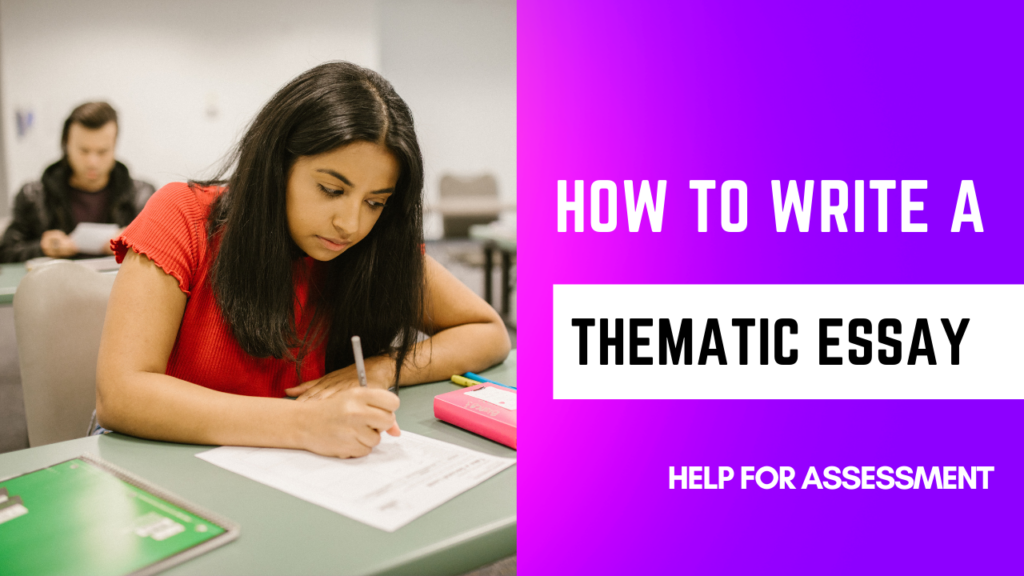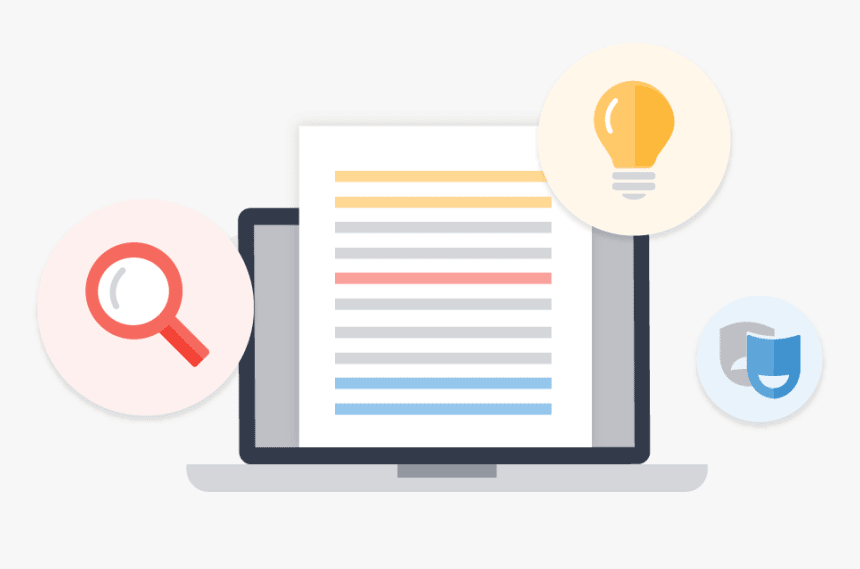In this guide, you'll learn exactly how to write a thematic essay step-by-step.
Thematic essays, or theme essays, require you to really examine a literary object such as a book, journal, paper, or other art form and pick out the main ideas (themes).
You will then explain how these themes are brought on and what literary devices are used to do that.
Key Takeaways
To write an outstanding theme essay, you should:
- Select a literary work to base your thematic analysis on.
- Choose a primary theme.
- Identify supporting evidence and literary devices used.
- Plan and outline the essay.
- Write the first draft.
- Edit and proofread your work for submission.
What is a Thematic Essay?
A thematic essay is a one in which you identify the main idea (theme) expressed in a chosen literary object and explore how the writer of that literature chooses to address that theme through various literary devices.
The devices can be metaphors, hyperbole, imagery, allegory, and many others.
Writing a thematic analysis essay is a great way to learn how to pick out themes in the literature you read as well as how to improve your writing skills.
A thematic essay will be at least five paragraphs long, but usually longer depending on the complexity of the work being reviewed.
You can write a thematic essay based on a book, a speech, a magazine article, a video, audio, or any other art form.
Choosing a Theme for a Thematic Essay
Choosing the main idea or theme of such a work is not a straightforward process.
It is highly subjective, and what you consider the main theme in a book may not be somebody else’s.
You have to make sure that what you pick as your main theme is fully supported throughout the book and makes significant appearances in most chapters, if not all of them.
How to Write a Thematic Essay Step by Step
Writing a thematic essay is easy. You just have to:
1. Choose a Literary Object
If your instructor does not provide the topic, think back to a book or article that made a strong impression to you, or think about your favorite pieces of literature.
Another option is to brainstorm. Brainstorming hardly fails, especially if you incorporate the help of your friends and even your instructor.
Collect different ideas and be sure to write each of them down, no matter how unlikely they sound. From there, eliminate most of these the following criteria:
- The topic should be interesting and captivating. Avoid those that are too common and overly used in academia unless you can provide a fresh twist or insight.
- The topic needs to have one or more important themes running through.
- It should be a literary work that is relatively well known and in the public domain.
- Some of the shorter works are best because they guarantee your essay won’t be too long.
This process will likely leave you with one or two possible topics, but make sure to confirm with your instructor that what you choose to focus on is acceptable.
2. Find a Relevant Theme
A theme is a significant idea that recurs throughout the literary work you have chosen. You can think of it as the main message the author is trying to pass across.
There are major and minor themes differentiated by how much attention the author gives to each.
For the best outcome, your theme should be one of the major themes addressed throughout the work.
There are a few things you can do to figure out what major themes are present:
- As you read the work, note and write down what tone, setting, language styles, and characterization the writer is using.
- What is the plot of the book and what does it lead to? Think about what you would tell somebody else about the book.
- Identify who the protagonist (main character) is and what they represent. Do they change at all in the book?
For example, in Harper Lee’s To Kill a Mockingbird, Atticus Finch does not change and represents morality, love, fairness, and good reason to the end.
- Put yourself in the author’s shoes and observe from their point of view. What message do you think they want to pass on as the most important?
3. Pick Material for the Essay
Read through the book again with the main theme in mind.
See how the author plays with it, what literary devices are used to highlight their thematic approach, and write down all these for reference.
What you are doing at this stage is a literary analysis.
The tools in the author’s hands include character development, mood, setting, irony, allegory, simile, alliteration, symbolism, metaphor, among many others.
Think about how effective these tools are in shining the light upon the main theme. It helps to read between the lines as well because sometimes the most important thing is what the author leaves unsaid.
4. Planning: Thematic Essay Outline
A thematic essay is very simple and straightforward. Like most essays, it will have an introduction, body, and conclusion.
Each of these parts should be considered carefully in the planning stage and map out which ideas will go where.
Introduction
The introduction serves to catch the reader’s interest, set the background, and mention what exactly you intend to discuss in the essay.
The first one or two sentences should be a hook, that is, a statement that will be intriguing enough to make the reader want to keep reading. It can be a clever observation, a surprising statement, or even a relevant question.
Second, provide a very brief background on which to build your essay.
However, you will be assuming that the reader has already read the literary work that is the subject of the essay. So you don’t have to give too much detail.
In winding up the introductory, write your thesis statement. This is a one-sentence statement that tells the reader what your essay is about.
However, don’t say it like this: “My thesis statement is ... “ Instead, let the introduction flow and link smoothly up to this point.
Body paragraphs
You will have three or more body paragraphs detailing your arguments about the main theme. In a thematic essay, each of the body paragraphs will be focusing on one literary device and how it is useful in presenting the theme message.
As with most essays, body paragraphs will follow the TEEL format.
- Topic Sentence: The introductory sentence introduces the idea that the paragraph is about. Think of it as a mini-thesis statement. The rest of the paragraph will be explaining and supporting this one statement.
- Explanation: Explain your topic idea clearly.
- Evidence: Give compelling evidence for your claims. It can be a quote, a direct observation, similar use of the same method elsewhere in the book, a citation from an authoritative work, etc.
- Link: Show how the idea you just described links with the rest of the essay and thesis statement. Again, you won’t say, “this idea relates to my thesis statement because …” Instead, let the whole paragraph flow smoothly and seamlessly.
The number of body paragraphs will depend on how much evidence you have collected. However, make sure to keep within the reasonable word count parameters as given by your instructor.
Conclusion
Recap the main arguments in your body and restate your thesis statement.
The purpose of the conclusion is to give your “take-home” argument, what you feel the reader should retain from the whole work.
Customize your theme essay outline accordingly; don’t make it as generic as this example here.
Fill it with details like what ideas you will include in your first paragraph, what your thesis statement will be, and what your introduction hook is. With this thematic essay format, you are now ready to do the write-up.
5. Write the Essay
With a good outline, writing a thematic essay becomes a piece of cake. You will simply be fleshing out the template.
6. Proofreading and Revision
Make sure to read through your essay at least twice.
Note how well your ideas flow, how the arguments and evidence presented link back to the thesis statement, and of course, clear any grammatical errors.
Thematic Essay Writing Help
If you don’t have the time to read your subject thoroughly and analytically, you can hire Help for Assessment’s essay writing service. We have a suitable writer that can help you get the assignment completed on time.
Frequently Asked Questions
1. How Do You Start a Theme Essay?
The introduction of your theme essay should be an intriguing hook about the subject you wish to discuss.
Ensure the hook is concise and strong enough to grab your reader’s attention.
2. What are the Elements of a Thematic Essay?
The elements of a thematic essay are the introduction, body paragraphs, and the conclusion.
Ensure the introduction includes a thesis statement. The body paragraphs should support the thesis using relevant examples, evidence, and arguments.
Lastly, the conclusion should be logical enough to tie everything together at the end.
3. What is the Main Point of a Thematic Essay?
The main point of a thematic essay is to identify themes from a source, present a theme statement, and address a specific issue within the requirement of the assignment.


